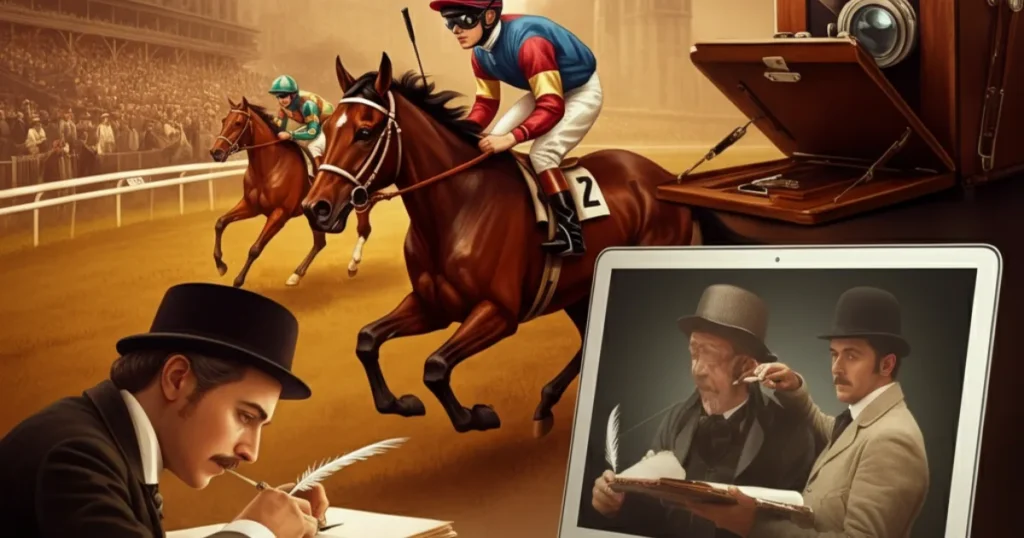Horse racing has long been regarded as “the sport of kings,” commanding a unique blend of passion, strategy, and sheer spectacle. For centuries, this sport has inspired a culture of journalism devoted to analyzing races, interpreting form guides, and uncovering stories from the track. Enter Presse Hippique, the distinct world of horse racing journalism that informs, educates, and connects fans, bettors, and industry professionals alike.
This blog dives into the essence and evolution of Presse Hippique, highlighting its historical roots, influential figures, key mediums, and the modern challenges it faces in an ever-changing digital landscape. Whether you’re a seasoned racing enthusiast or simply curious about horse racing journalism, this comprehensive guide is your gateway to understanding its enduring appeal.
The Fascination with Presse Hippique
At its core, Presse Hippique serves as both an educational tool and an entertainment medium. For fans, it’s their trusted resource for expert race predictions, interviews with jockeys and trainers, and in-depth reports on race results. For bettors, it provides strategic insights based on detailed data such as horse form, jockey statistics, and track conditions.
But it’s not just about analysis and numbers. Horse racing journalism also captures the beauty, drama, and human stories that unfold behind the scenes. From the triumphs of underdog horses to tales of legendary jockeys, Presse Hippique is a cultural bridge that deepens the public’s connection to this time-honored sport.
A Brief History of Horse Racing Journalism
To understand the significance of Presse Hippique, we must first explore its historical roots. Modern horse racing journalism can trace its lineage back to the 17th and 18th centuries when horse racing emerged as a formalized sport in Europe, particularly in England and France.
During this era, newspapers like Bell’s Life in London, established in the early 1800s, began dedicating columns to horse racing results and betting tips. Similarly, in France, publications started catering to race enthusiasts, giving birth to early forms of what we now recognize as Presse Hippique.
The 20th century saw the golden age of horse racing journalism, with publications expanding their scope to include illustrated magazines, radio broadcasts, and coverage of global racing events. Racing journalists became trusted voices in the industry, offering insights and storytelling that fueled the sport’s popularity.
Influential Figures in Presse Hippique
Throughout history, numerous personalities have shaped the world of horse racing journalism. These individuals range from legendary writers who revolutionized the industry to contemporary analysts admired for their expertise and storytelling.
- John Gosden (UK): Although better known as an acclaimed racehorse trainer, Gosden’s commentary and insights in racing publications are widely regarded as authoritative.
- Thierry Vagne (France): A primary figure in horse racing journalism, Vagne’s work in Presse Hippique is revered for its depth and accuracy.
- Bill Shoemaker (US): While a jockey, his written pieces offered insightful anecdotes that straddled the line between athlete and journalist.
These are but a few examples of how the boundaries between industry professionals, journalists, and storytellers blur in the dynamic world of horse racing coverage.
Types of Media in Horse Racing
Modern Presse Hippique comes in a variety of forms, reflecting both tradition and innovation.
Print Journalism
Publications like Paris-Turf in France, The Racing Post in the UK, and Daily Racing Form in the United States remain historic staples of horse racing journalism. They provide everything from detailed form guides to long-form articles on the history of races and prominent figures in the industry.
Online Platforms
The transition to digital media has reshaped Presse Hippique, with websites, blogs, and e-newsletters offering real-time updates, race analytics, and on-demand commentary. Platforms such as Thoroughbred Daily News demonstrate how accessible horse racing analysis has become globally.
Broadcast and Streaming Media
Race previews, live broadcasts, and post-race discussions on television channels like Sky Sports Racing and Equidia create an immersive experience for fans. Meanwhile, online streaming services are making racetrack action and expert insights accessible to audiences anytime, anywhere.
Social Media
Social media platforms such as Twitter and Instagram are home to micro-bloggers, influencers, and racing organizations that share bite-sized updates, video highlights, and personal anecdotes from the world of horse racing.
The variety in media forms ensures that Presse Hippique continues to cater to an evolving audience with diverse preferences.
Challenges and Opportunities in Modern Horse Racing Journalism
While Presse Hippique remains central to the horse racing community, it faces several challenges in today’s fast-paced media landscape.
Challenges
- Digital Disruption
Print publications have faced declining revenue as many readers migrate to free and fast online content. Adapting to the digital-first age is no longer optional.
- Misaligned Perceptions
The rise of animal rights activism has pushed horse racing to reevaluate its image. Journalism faces the challenge of reporting candidly on issues like animal welfare and racehorse retirement programs.
- Saturation of Data
With AI tools and analytics providing endless streams of data, journalists must strike a balance between insightful analysis and overwhelming their audiences with information overload.
Opportunities
- Global Reach via Digital Tools
Online platforms enable Presse Hippique to expand beyond regional audiences, bringing international racing culture to a broader, more engaged global community.
- Interactive Features
Digital tools allow publications to offer features like virtual race simulators or personalized betting predictions, keeping readers actively involved.
- Younger Demographics
Social media provides an opportunity to attract younger audiences, many of whom engage with sports through short content formats like TikTok clips or Instagram reels.
By evolving proactively, horse racing journalism can not only overcome these challenges but also thrive in a digital and interconnected world.
Why Presse Hippique Persists
Despite shifting media trends, complex challenges, and changing audience dynamics, Presse Hippique endures as an essential facet of horse racing culture. It harmonizes technical analysis with storytelling, fusing the thrill of competition with meaningful human narratives.
For enthusiasts, journalists, and professional punters, Presse Hippique is more than just a source of information—it’s an invitation to participate in the grand tradition of horse racing. By evolving to meet modern expectations while staying rooted in its rich history, its appeal is sure to remain unquestionable.






